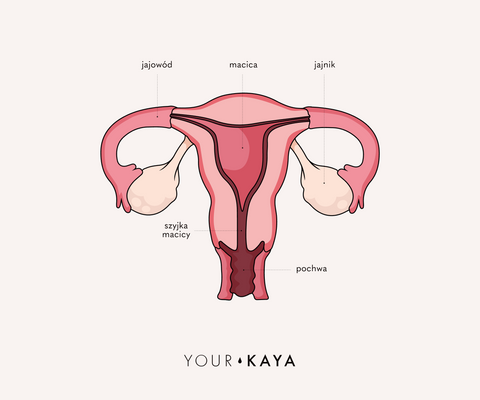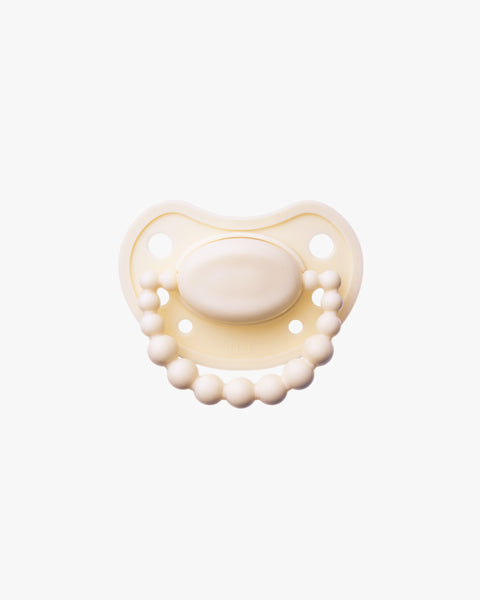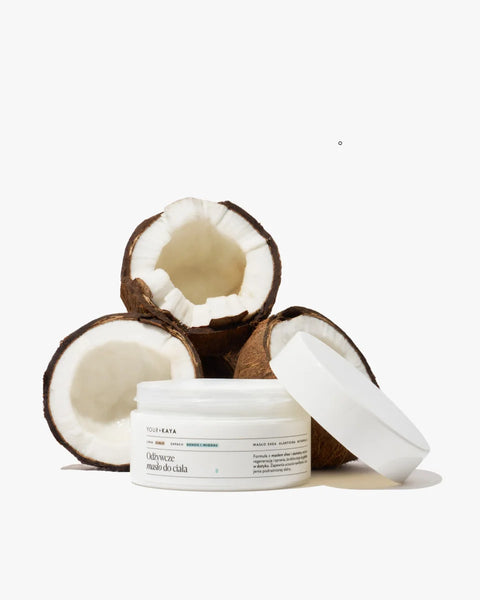What changes occur in the body during the monthly cycle?
How long does a menstrual cycle last?
When is it possible to get pregnant?
What pathologies can appear during the menstrual cycle?
In finding answers to all our questions, we were helped by Dr. Karolina Rasoul-Pelińska – an experienced gynecologist working in a clinic dealing with gynecological oncology.
What is a menstrual cycle?
The menstrual cycle is a series of repeated changes in the body that are designed to prepare it for a potential pregnancy. It depends on the concentration of sex hormones and the hypothalamic-pituitary-ovarian axis associated with them. During the cycle, the endometrium (uterine lining) grows in additional layers to create the most comfortable conditions for a potential fertilized egg. If fertilization does not occur, the lining sheds, resulting in menstrual bleeding .
Also check out our text about menstruation !
How to count your menstrual cycle?
It is assumed that the menstrual cycle normally lasts 28 days, counting from the first day of bleeding . This is a simplification, because according to research, the length of the menstrual cycle is exactly 29.1 days (plus or minus 7.5 days). Many other sources indicate a range of 21 to 35 days as the optimal cycle length .
However, it is not the length of the menstrual cycle that is most important, but its regularity – that is why there are deviations from the accepted 28 days. According to Karolina, in everyday medical practice it is considered that shifts of 2 to 4 days from the previous period still categorize the menstrual cycle as regular . This is due to the multitude of factors influencing the menstrual cycle, which we will discuss below.
We are such delicate creatures that many factors can determine how long our cycle lasts: from a stressful exam to even a trivial cold .
However, if the menstrual cycle is abnormally prolonged and we cannot predict when it will come, it is necessary to see a doctor to start diagnostics.
When can the first menstrual cycle occur?
The first period (menarche) occurs between 12 and 14 months after the so-called pubertal growth spurt. The menstrual cycle usually begins between the ages of 12 and 13, but as with everything, there is no universal rule here, and there are teenagers who start menstruating at the age of 15 or 16.
The initial cycles may be irregular – Karolina reveals that in gynecological practice, regulating the cycle may take up to 5 to 6 years and if after this time the body has not developed a certain pattern, only then should diagnostics be implemented.
The range of menstrual periods ending is even greater, because they typically occur between the ages of 45 and 55. This phase is equally blurred, and before menopause occurs , we still have the perimenopausal period , during which bleeding occurs less frequently, is irregular, and its intensity can be unpredictable.
Phases and points of the menstrual cycle 
- Menstruation – or menstrual bleeding . During this period, the excretion of the uterine lining along with menstrual fluid occurs , lasting an average of 3 to 5 days (although bleeding from 3 to 7 days is also considered normal).
- Follicular phase – under the influence of the FSH (follicle stimulating hormone) hormone, a dominant Graafian follicle appears in the ovary , and mucus accumulates in the cervix , which then changes its consistency to watery and clear. On the last day of the presence of this mucus in the vagina, the next phase of the menstrual cycle begins.
- Ovulation – during this, the follicle releases the egg into the fallopian tube , where it stays for 24 hours . After ovulation, there is a characteristic increase in body temperature, usually by 0.5 degrees Celsius. Fertile days fall about 3 days before and after ovulation , however, in some sources you may come across a 5-day interval (due to the lifespan of sperm ).
- Luteal phase – the body prepares to receive a fertilized egg. This is when the corpus luteum cells produce more progesterone, which disappears if fertilization does not occur. The elevated body temperature during ovulation persists, and the mucus changes to whitish and more viscous (less permeable to sperm).
Karolina helped us describe the individual phases of the cycle in more detail to give you an even better understanding of the secrets of the menstrual cycle.
The first day of the menstrual cycle coincides with the first day of menstruation. The endometrium is shed and our lives are filled with blood, tears and chocolate :) During bleeding days, additional hygiene measures are necessary to protect against leakage.
What is important to us is that since the egg has not been fertilized, the "old" uterine lining is shed to make a good base for the formation of new cells. This is associated with low hormone levels and lack of pregnancy , although so-called implantation spotting may appear at the predictable time of menstruation - so do not treat bleeding as a 100% exclusion of fertilization.
Hypothetically, fertilization is almost impossible on these days - yet nature knows such cases (for example, with irregular menstrual cycles or hormonal imbalance). Most people have infertile days then, and sex during bleeding can even reduce period-related pain . Remember, however: when it comes to the intensity and positions adopted during intercourse, your comfort is the key word .
The follicle with the egg cell grows, the lining of the uterus grows to prepare for the fertilized egg and to allow it to develop, and we feel better and better. The next phase – the follicular phase – lasts about 13 days. During this phase, the Graafian follicle matures in the ovaries .

After that comes ovulation , which is the release of the egg from the follicle. When?
In regular menstruators with a standard 28-day cycle, ovulation occurs on the 14th day of the cycle. This is when we can feel a stab in our abdomen as our egg is released. What causes this? A small amount of fluid enters the abdominal cavity and irritates its walls. Some people also have slight spotting at this time , caused by the subsequent drop in estrogen levels.
Don't worry though! In the absence of other pathologies, this may simply be the case. However, if the episodes recur and you are concerned, contact your doctor.
Around ovulation, we usually feel great, and it's all thanks to the hormonal peak. Then, the body experiences so-called fertile days - but remember, we are not fertile only on that one day of ovulation!
Both sperm and egg have their own survival time in the reproductive tract (sperm live for about 72 hours, egg – about 24 hours).
If we do not want to get pregnant, we have to be especially careful for 7 days a month (the previously mentioned 3 days before ovulation, on its day and 3 days after), but let's not forget that getting pregnant is also possible on the remaining days of the cycle, so it is a good idea to extend the increased caution to about 11 days.
For many people, using apps and menstrual calculators makes it easier to determine fertile days. Observing menstrual mucus can also be a clue - when it becomes thick and opaque , it indicates the end of fertile days. It is worth combining this with observing body temperature - we write more about this here .
We also encourage you to read our article aboutall contraceptive methods .
After ovulation, we enter the next phase of the menstrual cycle – luteal . On average, it lasts 14 days . Even in people who menstruate irregularly, the fluctuations concern the length of the follicular phase rather than the aforementioned luteal phase. During this phase, the body has a high level of progesterone – a hormone that plays a key role in preparing the uterine lining for pregnancy.
After the transformation of the ovarian follicle - after the Graafian follicle bursts and releases the egg - a corpus luteum is formed , which produces progesterone. If the egg is fertilized, it will transform into a gestational corpus luteum. However, if this does not happen, it will transform into a corpus albuginea, and the progesterone level will drop, starting the gradual shedding of the endometrial membrane (around day 28 of the cycle).

During the monthly cycle, everything changes – not only our sexual organs, but also:
- body temperature (this is important for natural contraception methods),
- degree of water storage (and therefore body weight ),
- mood ,
- appetite ,
- there may be additional symptoms (e.g. migraine headaches),
- Depending on the day of the monthly cycle, the libido level also changes ,
- Hormonal acne changes may appear on the face .
These symptoms are known as premenstrual syndrome (PMS) and are usually experienced about 7 to 12 days before menstruation begins. PMS symptoms usually subside on the first day of menstruation, and according to some sources , within the first 2 to 3 days of bleeding .
Let's be understanding and treat ourselves with tenderness during our "bad days". Let's not expect our body to endure, for example, intense physical exertion if we are feeling worse. Let's learn to deal with our moods and let's not expect ourselves to always be smiling.
If pain is keeping us awake at night, and commonly available painkillers are not working, let's consult our doctor . Together with him, we will make a decision about further treatment: intensifying painkillers , implementing hormonal or other activities that can help us reduce the symptoms associated with PMS (including yoga, herbs, acupuncture, CBD or other natural, non-medical methods).
You can read about all the symptoms of your periodhere .
When to consult a doctor?
Karolina, sharing her knowledge, emphasizes that each of us is different and our cycles differ in terms of length, intensity and how we feel on particular days.
However, there are pathologies of the cycle : too long or short, too intense or painful.
Are irregular periods a pathology?
YES.
Should they always be treated?
Yes and no.
We can treat them when they interfere with our health (for example, getting pregnant), but after ruling out other pathologies (such as PCOS , ovarian cysts or fibroids ) we can wait with a doctor to intensify the treatment when we want to start trying to get pregnant.
Everything related to the menstrual cycle is, of course, much more complicated: hormones interact with each other in a feedback loop , and any fluctuation entails a series of changes.
Heavy periods
Another important issue is excessive menstrual bleeding. We wrote about how to classify it and how to measure the volume of menstrual fluid here .
A one-time heavy bleeding shouldn't worry you too much. Monitor your condition and well-being for at least 3 cycles - if after that time you find that your periods have become heavier, don't hesitate to consult a gynecologist. They can be caused by, among other things:
- endometriosis ,
- polyps or uterine fibroids ,
- disorders and diseases of the coagulation system.
So if your cycle worries you or you have noticed any irregularities in its regularity or course – consult a gynecologist!
Menstrual cycle without taboos!
Remember that you are not alone – menstruation is a natural process that proves the proper development of the body .
Any menstrual cycle disorders should not be a reason for shame, but a motivation to visit a doctor and take care of your health.
Karolina also gave us links to interesting articles. If you want to expand your knowledge on this topic – check out the sources!
Created at: 05/08/2022
Updated at: 15/08/2022












































































































































